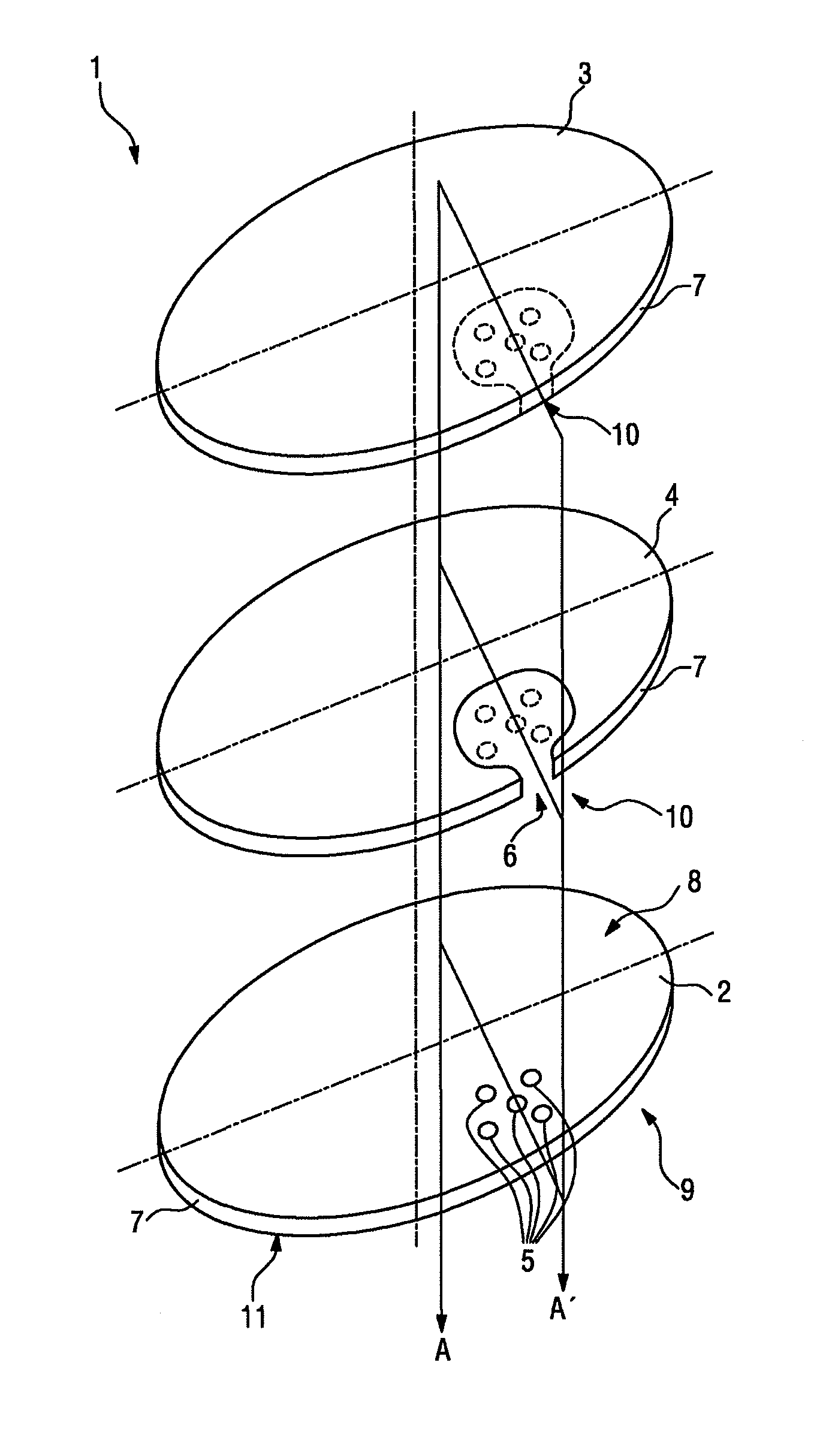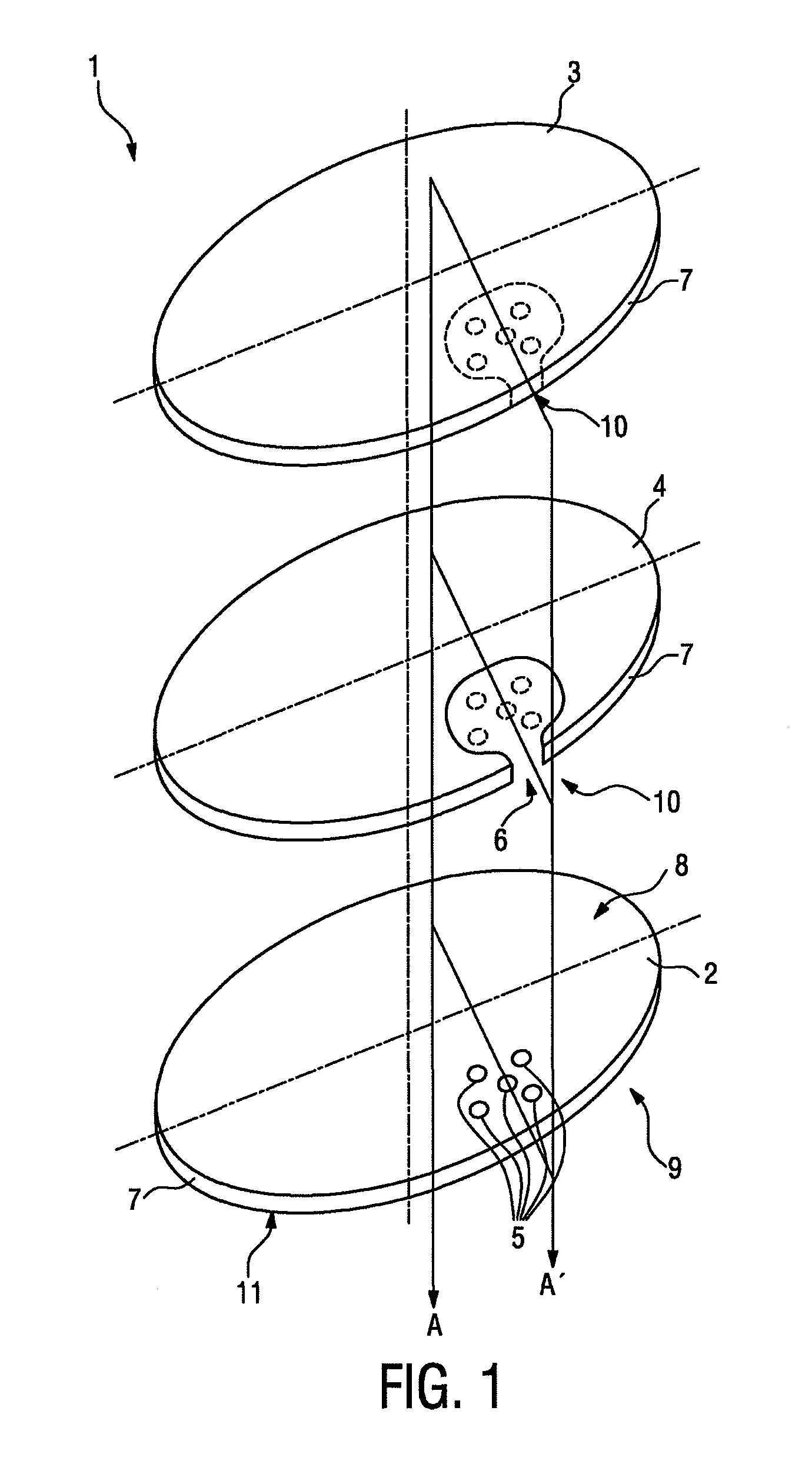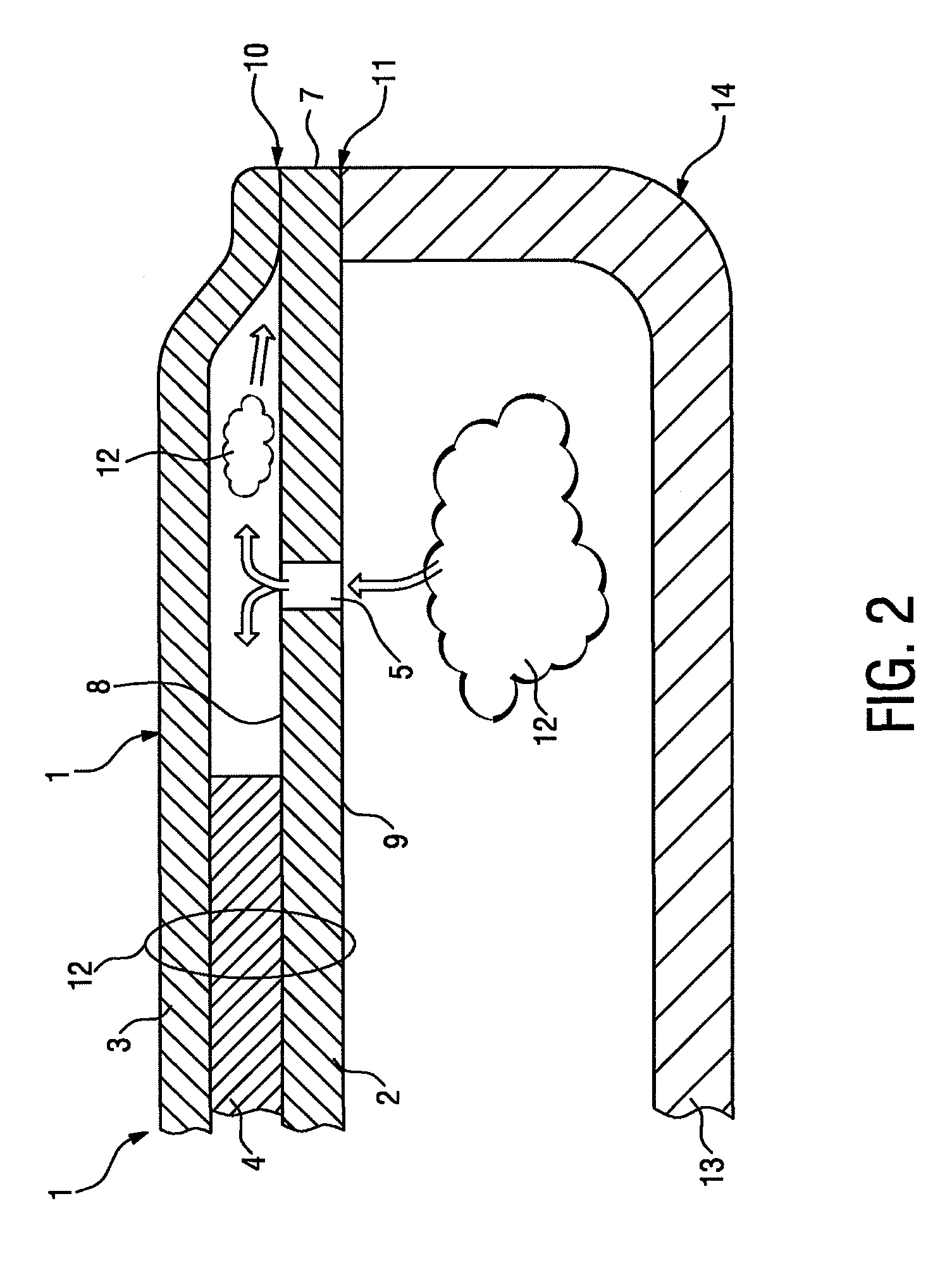Foil for providing a peel-seal valve, package comprising the foil, and method of manufacturing the foil
a technology for peeling valves and foils, which is applied in the direction of closure lids, lamination, containers, etc., can solve the problems of affecting the usability of the package, so as to improve the usability and control. the effect of improving the control
- Summary
- Abstract
- Description
- Claims
- Application Information
AI Technical Summary
Benefits of technology
Problems solved by technology
Method used
Image
Examples
first embodiment
[0059]FIG. 1 shows three layers of a foil 1 according to the invention, wherein each layer is typically in contact with its neighboring layer(s) but for the sake of clarity in FIG. 1 shown with distance to each other. The three layers are a first plastic film 2, a second plastic film 3 and an adhesive layer 4 interposed between the first plastic film 2 and the second plastic film 3. The adhesive layer 4 laminates the two films 2 and 3 together.
[0060]The first plastic film 2 comprises a number of punctures 5, wherein in the present embodiment only five of these punctures 5 are shown because of clarity reasons. In reality the number of punctures 5 might be selected to be much higher and the diameter of the punctures 5 might be much smaller. In the two layers visualized above the first plastic film 2 broken lines indicate the position of the punctures 5 schematically. The adhesive layer 4 leaves open the punctures 5 such that gas can penetrate through the punctures 5 in-between the two...
third embodiment
[0073]FIGS. 7 to 9 relates to the foil 2 according to the invention and its application in a package 14. According to this embodiment between the two films 2 and 3 the adhesive layer 2 tightly seals the punctures 5 from an outer edge 7 of the foil 2. Given the tight sealing by the aid of the adhesive layer 4, which implies that the two films 2 and 3 are spaced from each other and can not any more be sealed together, the first peel-able seal 10 is now created by another property of the first plastic film 2. In the present case the first plastic film 2 is designed to cerate in its structure a cohesive crack adjacent to the adhesive layer. This design allows to cerate a cohesion peel seal.
[0074]The structure of the foil 2 is visualized in FIG. 7, in which context it is emphasized that the sealing of the punctures 5 is realized in form of a number of strip-like extensions 17 of the adhesive layer 4 located within the channel 6 into which the punctures 5 are entering. The channel 6 exten...
PUM
| Property | Measurement | Unit |
|---|---|---|
| temperatures | aaaaa | aaaaa |
| thickness | aaaaa | aaaaa |
| thickness | aaaaa | aaaaa |
Abstract
Description
Claims
Application Information
 Login to View More
Login to View More - R&D
- Intellectual Property
- Life Sciences
- Materials
- Tech Scout
- Unparalleled Data Quality
- Higher Quality Content
- 60% Fewer Hallucinations
Browse by: Latest US Patents, China's latest patents, Technical Efficacy Thesaurus, Application Domain, Technology Topic, Popular Technical Reports.
© 2025 PatSnap. All rights reserved.Legal|Privacy policy|Modern Slavery Act Transparency Statement|Sitemap|About US| Contact US: help@patsnap.com



